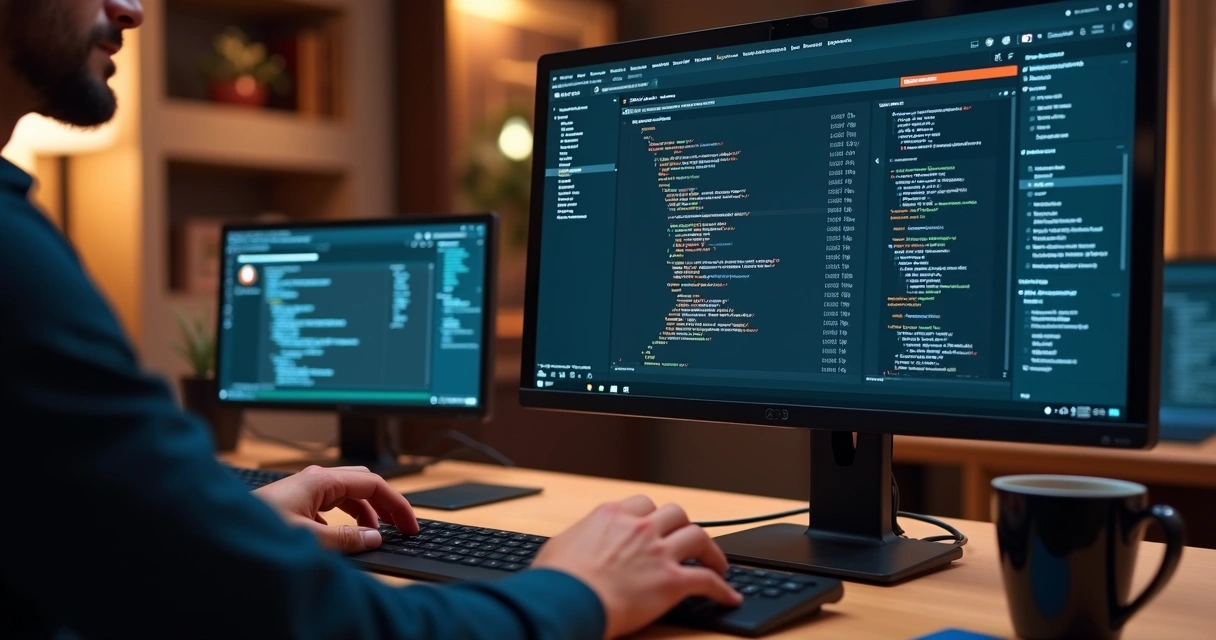Throughout my career, helping early-stage startups and growing businesses turn an idea into a live product has become a personal passion and a recurring challenge. The race to validate concepts before cash or momentum runs out is almost universal. In my experience, the combination of Laravel (as a backend) and React (as a frontend) hits a rare sweet spot for teams seeking both speed and long-term viability. Again and again, I see founders uncertain about which technologies can bring their MVP online quickly—yet are robust enough to scale when success comes knocking. I want to show exactly why this pairing works, take you step by step through setting it up, and share what it means for you if you’re on the cusp of bringing your product to life.
Defining the MVP scope in startup projects
Most people who reach out to me have heard the term MVP—Minimum Viable Product—but the expectations are always different. Some picture a stripped-back beta with just a “sign up” flow and a landing page. Others want a nearly complete version. Getting the scope right isn’t just a technical question; it’s about survival and speed. An MVP is the tiniest, testable version of an idea that can deliver value and collect feedback with as little effort as possible.
Startups need to focus on:
- Basic user registration and authentication
- Core workflows (e.g., product listing, basic checkout, core dashboard)
- Analytics or feedback mechanisms
- Lean, adaptable infrastructure (so real-world data guides your next steps)
There’s temptation to add “just one more feature.” I always advise founders to trim the fat ruthlessly, at least in the first build. Doing this lets the market—not opinions—guide your path.
"Build less. Learn more."
The sooner feedback comes in, the faster you iterate and improve.
Why Laravel works well for back-end MVPs
I’ve worked with a lot of frameworks, but Laravel consistently stands out for early builds. Here’s why:
- Rapid setup out of the box. Laravel ships with project structure, migration tools, authentication scaffolding, and built-in security defaults, so developers like myself can move from idea to prototype in a matter of hours, not days. For teams who want quick pivots, this is a game changer.
- Elegant ORM (Eloquent) for database interaction. When changes are needed, it’s easy to update your schema and keep business logic readable and manageable—even as features multiply.
- Middleware and routing flexibility. Laravel gives precise control over API endpoints, versioning, and authentication. This matters a lot during MVP phases, where requirements shift with every new insight.
- Real security by default. User authentication, CSRF protection, and safe password storage are all included—no wrestling with low-level APIs or patchwork solutions.
- Strong ecosystem and scalability trajectory. Even if you start small, you can easily add caching, queue jobs, cloud storage support, or testable microservices. When your MVP needs to grow, the transition is smooth.
In my consulting work, I see a lot of alternatives—Node.js frameworks, other PHP platforms—but the rapid progress and low friction with Laravel is unmatched for back-office-heavy or API-driven MVPs. The University of Denver’s modern web frameworks curriculum also highlights that the Laravel community is very active, which is great for finding help and integrations as the MVP matures.
 React as a high-performing, reusable front-end
React as a high-performing, reusable front-end
I’ve seen React evolve from a newcomer to the standard choice for new web frontends. My reasons for picking React at MVP stage are practical:
- Reusable components speed up development. Once you have a basic login form or dashboard, you can clone, adjust, and introduce features fast with minimal code repetition.
- Performance and interactivity—without overcomplicating things. Even “basic” MVPs often benefit from a few interactive UI elements (search, live updates). React lets me do this without tons of overhead.
- Rapid onboarding for teams. If you need to bring in new hands, there’s little learning curve—React’s concepts and syntax are well-documented and widely known.
- Easy API consumption. React is agnostic about where it gets data. This “decoupled” feel means I can wire it to Laravel APIs and later pivot features or even port to native apps, without large rewrites.
And echoing my own hands-on experience, several studies (including those found in Loyola Marymount University’s applied development practices) point out that React’s component structure lends itself perfectly to quick prototyping and split testing in MVPs. Focusing team energy on atomic, testable frontend elements facilitates the learning loop: build, test, measure, repeat.
"React makes UI changes fast and almost fun."
 Step-by-step: setting up Laravel and React together
Step-by-step: setting up Laravel and React together
Walking new clients through this pairing, I like to break the process into focused steps. The keys are simplicity and clean separation. Here’s how I typically go about it:
Initialize the backend (Laravel)
- Set up the environment. I start with PHP 8+, Composer, and local environment tools (Valet, Docker, or Homestead, depending on the team’s DevOps readiness). The right DevOps setup makes this even smoother.
- Create the Laravel project. Run composer create-project laravel/laravel mvp-backend.
- Add authentication scaffolding. Laravel Breeze or Jetstream gets basic sign-up/in, password resets, and even API tokens in place.
- Design the database. Map your MVP’s core data: users, products, feedback, etc. Laravel migrations make it easy to version and evolve.
- Build core API endpoints. Use Laravel’s route and controller structure to expose just what your React app needs. Keep it simple: don’t over-couple business logic at this stage.
- Test the endpoints. Tools like Postman or HTTPie allow manual and automated verification—something I recommend right away.
Spin up the front-end (React)
- Initialize a new React project. Run npx create-react-app mvp-frontend (or use Vite for a lighter setup).
- Structure by components. Even if your MVP is only a few screens, start with /components, /views, and /services folders so scaling won’t get messy.
- Connect to backend APIs. Install axios or use fetch, and point calls to your Laravel backend routes. Keep API logic in one place for easy management.
- Handle authentication states. Use React hooks (useState, useContext) to track if a user is logged in, loading, or logged out. It makes UI updates smoother.
- Add navigation and routing. React Router is simple to set up and crucial for MVPs where you want to try different flows.
- Style quickly. Use CSS-in-JS (styled-components) or a lightweight framework like TailwindCSS for rapid layouts.
And always—always—keep the build process simple. I favor splitting the Laravel API and React client into separate directories. This clears deployment headaches and makes it easier if different freelancers or teams join in down the road. If API integration feels daunting, I outlined key principles in one of my API integration guides.
 Making architectural decisions: databases, deployment, and team
Making architectural decisions: databases, deployment, and team
If I had to point at the moments that shape an MVP’s fate, technical choices made in the first week always come to mind. These choices set the tone, not just for building, but for fixing and scaling later. Here’s what I focus on with my clients:
Choosing the right database
I favor PostgreSQL or MySQL with Laravel’s Eloquent ORM, depending on familiarity and future needs. Both work well for basic CRUD and scaling. When rapid prototyping is the goal, SQLite is a valid short-term choice as well.
- Start lean. If your MVP is mostly CRUD and no convoluted data relationships, a single database instance is fine. As traction builds, it’s very straightforward to move to managed services on AWS, DigitalOcean, or other clouds.
- Plan for migrations. Laravel’s migration engine and seeders allow painless transitions. Data can evolve with business logic without risky rewrites.
Deploying to the cloud
Cloud deployment is non-negotiable for MVPs today. I prefer AWS or DigitalOcean—both have a strong record uptime, good security, and cost transparency. I help ...
